Inside the Market’s roundup of some of today’s key analyst actions
RBC Dominion Securities analyst Paul Treiber expects first-quarter results for Canadian technology companies to fall largely in line with consensus expectations on the Street.
However, he warns macroeconomic uncertainty stemming from tariffs may result in “elongated sales” cycles and reduced near-term bookings for software companies moving forward, while lower consumer spending will be a headwind to those relying on payments-related revenue.
“We believe some companies may reduce 2025 guidance in light of the uncertainty,” he added. “Amidst this environment, we believe the consolidators in our coverage are likely to be the most defensive, as these companies are more likely to deploy capital on acquisitions. We believe the best positioned stocks for calendar Q1 include Constellation, Topicus.com, and Kinaxis.”
Mr. Treiber predicts the significant macroeconomic uncertainty hovering over the entire tech sector will overshadow first-quarter results in the approaching earnings season.
“The vast majority of stocks in our coverage universe are software companies, which are not subject to tariffs. However, tariffs have second-derivative risks for software companies that are not reflected in consensus estimates,” he said. “Our U.S. Software team recently previewed calendar Q1. Our team has not yet picked up real fundamental and broad business disruption at software companies from tariffs, but this can change quickly. Tariffs may lead to a macroeconomic slowdown, which may result in reduced discretionary spending across the economy. Software may face longer sales cycles as a result of the uncertainty. For stocks in our coverage with exposure to consumer spending, tariffs are likely to have an inflationary impact and may weigh on consumer spending.
“Constellation (and spin-outs Topicus.com and Lumine) are likely to be some of the most resilient stocks in our coverage through Q1. Even though several of Constellation’s large acquisitions did not close in Q1, we believe Constellation’s shares are likely to be resilient, as investor sentiment is likely to remain positive. We believe Constellation’s M&A model is counter-cyclical, in that the company is more likely to deploy capital in periods of economic duress. Our outlook calls for capital deployed on acquisitions in Q2 to reach the highest quarterly level in 3 years. Regarding Topicus.com, we believe Topicus.com is likely to report a solid quarter. With the likely close of several large investments Q2, Topicus.com is tracking to a record annual high in capital deployment.”
While noting most Canadian tech stocks currently trade at discounted valuations, Mr. Treiber reduced his target prices for six of the 11 companies he covers. His changes are:
* Altus Group Ltd. (AIF-T, “sector perform”) to $58 from $62. The average target on the Street is $59.71, according to LSEG data.
Analyst: “Macro uncertainty may weigh on Altus’ Q1 bookings and reduce visibility to improved organic growth through 2025. We believe Altus may slightly lower FY25 guidance to reflect lower organic growth. With the company moving to a net cash position following the sale of its Property Tax unit, we see an increased pace of share buybacks helping support the stock amidst market volatility.”
* Calian Group Ltd. (CGY-T, “outperform”) to $60 from $65. Average: $69.29.
Analyst: “In light of reduced procurement ahead of the upcoming Canadian federal election, we expect organic growth to likely remain negative Q2. However, the headwind appears already reflected in consensus estimates and we anticipate Q2 adj. EBITDA down 14 per cent year-over-year, largely in line with consensus. We believe Calian is likely to reiterate FY25 guidance, though visibility is likely declining to implied 2H growth rebound, unless M&A materially ramps up.”
* Celestica Inc. (CLS-N/CLS-T, “outperform”) to US$120 from US$160. Average: US$132.36.
Analyst: “We expect Celestica to report solid Q1 results, possibly above our estimates and consensus, given continued hyperscaler build-outs of data centers. While Celestica has a track record of raising guidance (3 times in both FY23 and FY24), we believe macro/tariff uncertainty is likely to result in the company leaving FY25 guidance unchanged. Tariffs are a potential headwind to growth, though Celestica’s hyperscaler customers are likely less price sensitive while Celestica’s global footprint positions the company well to manage supply chain disruptions.”
* CGI Inc. (GIB.A-T, “outperform”) to $185 from $192. Average: $175.71.
Analyst: “We believe the IT services industry is likely to face growth headwinds over the next several quarters given macro uncertainty weighing on discretionary spending. As a result, we believe CGI’s organic growth and bookings are likely to slow. However, CGI has deployed $1.3-billion capital on acquisitions in the last 5 months. We believe accretion from acquisitions will help mitigate slower organic growth.”
* Coveo Solutions Inc. (CVO-T, “outperform”) to $10 from $11. Average: $9.53.
Analyst: “We forecast Q4 revenue towards the high-end of guidance and in line with consensus, given Coveo’s historical track record of conservative guidance. In light of the uncertain macro environment, we believe Coveo is likely to provide conservative FY26 guidance, with SaaS growth in the low double-digits, slightly below consensus. That being said, Q4 is likely the trough for SaaS growth, and we expect sequential improvements in growth through FY26.”
* Open Text Corp. (OTEX-Q/OTEX-T, “sector perform”) to US$30 from US$31. Average: US$34.55.
Analyst: “We believe OpenText is likely to report Q3 in line with consensus and the company’s quarterly factors. However, reduced discretionary spending as a result of macro uncertainty is a headwind to bookings growth over the near-term. As a result, OpenText may reduce FY25 bookings guidance and possibly FY25 revenue guidance. However, we see OpenText deploying an increasing portion of FCF on share repurchases, which helps provide some support for the stock.”
=====
RBC Dominion Securities analyst Matthew McKellar thinks the macro outlook for North American paper and forest products companies has become “significantly more clouded” since the start of the year “with tariffs and trade and the implications for growth and inflation squarely in the spotlight over the last couple of months.”
“We expect that the trajectory of demand could be at least as important as the direct implications of any tariffs for much of our coverage group,” he added. “However, despite the shifting macro outlook and what we expect could be a dynamic trade backdrop for some time, our preferred ways to play the paper and forest products space remain relatively consistent; we continue to see opportunities where supply rationalization/discipline has been supportive of relatively tighter conditions (e.g., lumber, containerboard) and valuations are reasonable.”
In a research report released Tuesday titled The forest endures, Mr. McKellar predicted demand trends stemming from the disruption brought by tariffs is likely to overshadow first-quarter financial results over the next few weeks.
“Our recent conversations with clients suggest a highly uncertain outlook for the trajectory of demand across many products for the balance of 2025, which is appropriate in our view given a rapidly evolving trade backdrop and its potential implications,” he said. “While recent capacity rationalization across many products (e.g., containerboard, lumber, NBSK and fluff pulp, UFS) puts companies on better footing to navigate a potential downturn in demand from a supply-demand balance perspective, we expect there could be both short-term supply/demand disruptions (e.g., on the back of specific tariff announcements) and more medium-term headwinds for demand (i.e., as trade issues potentially erode economic growth generally).
“What names are more and less exposed to developments on tariffs that may occur as the year progresses? While we have little confidence in how the specifics of tariffs will evolve over the next several months, our thoughts on the initial Liberation Day tariff announcements provide a guide for evaluating scenarios that may occur. Outside of reciprocal tariffs, potential Section 232 tariffs could still affect wood products later this year; in lumber, tariffs that could stack on significantly higher softwood lumber duties later this year could result in a significant disadvantage for the Canadian industry, but CFP, IFP and WFG are all geographically diversified (more capacity in the U.S. than in Canada) and we would be more concerned about potential softness in demand vs. the impact of tariffs/duties (within reason).”
Given the uncertainty, the analyst made target price adjustments to many of the stocks in his coverage universe. His changes include:
- Acadian Timber Corp. (ADN-T, “sector perform”) to $19 from $21. The average target on the Street is $20.50.
- Canfor Corp. (CFP-T, “outperform”) to $16 from $19. Average: $19.
- Cascades Inc. (CAS-T, “sector perform”) to $11 from $13. Average: $13.17.
- Doman Building Materials Group Ltd. (DBM-T, “outperform”) to $10 from $11. Average: $10.29.
- Interfor Corp. (IFP-T, “outperform”) to $21 from $26. Average: $22.42.
- Mercer International Inc. (MERC-Q, “sector perform”) to US$5 from US$7. Average: US$6.63.
- Western Forest Products Inc. (WEF-T, “sector perform”) to 50 cents from 70 cents. Average: 56 cents.
- West Fraser Timber Co. Ltd. (WFG-N, “outperform”) to US$99 from US$117. Average: US$110.61.
“What is being overlooked amid all the noise around tariffs? (1) Despite unfavourable January/ February weather, soft March housing starts (~flat m/m for single-family before seasonal adjustments), and no U.S. tariffs being applied to Canadian imports, lumber prices are still up since the end of 2024 (the Framing Lumber Composite is up $50/mfbm, or approximately 12 per cent), which in our view reflects some fundamental improvement in market conditions following significant rationalization of capacity last year; (2) The outlook for OSB prices looks somewhat precarious given ramping supply from three mills, with further capacity in the pipeline for 2026+; (3) International Paper (and potentially others) seems likely to take further capacity out of the North American containerboard market, which could help balance out any decreases in demand, and support operating rates and pricing; (4) For investors looking for ideas relatively less exposed to a potential slowdown in demand, current valuations across certain names look reasonable against long-term average multiples (e.g., OP-rated DBM and WY),” he said.
Mr. McKellar added: “Favourite names: In Canada, we like IFP, DBM, and CFP; in the U.S., we like IP, SW and WFG.”
=====
In his own research report previewing earnings season for paper and forest products companies, CIBC World Markets analyst Hamir Patel also adjusted target prices and ratings across his coverage universe.
“Heading into Q1 earnings season, we continue to favor the plastic packaging names over wood/building products where elevated rates are likely to continue weighing on demand and Canadian lumber companies face escalating costs later this year (as duties more than double by Q4 and the spectre of Section 232 tariffs loom over the space),” he said. “CCL remains our top pick across our coverage universe. We believe CCL’s diversified global platform and end‑market exposure should support steady top-line growth over the cycle, while the breadth of its operations minimizes global trade war risks. With leverage of only 1.1x, the company is well positioned to be opportunistic with M&A and share repurchases.
“On the wood products side, our preferred name remains West Fraser. WFG’s low-cost position, strong balance sheet and diversified commodity exposure (evenly split between lumber and OSB) place it well to take advantage of M&A opportunities that may emerge among lumber peers with weaker balance sheets. We also rate Stella-Jones and Weyerhaeuser Outperformer in wood products, two names we upgraded in our 2025 Outlook in mid-January. Across our broader housing‑related coverage, we also have an Outperformer rating on ADENTRA. With limited signs of renovation spending rebounding this year given stubbornly high mortgage rates, we remain cautious on the demand backdrop for wood products over the remainder of 2025.”
Mr. Patel made three rating revisions on Tuesday.
He upgraded Winpak Ltd. (WPK-T) to “outperformer” from “neutral” and raised his target o $50 from $49. Te average is $51.33.
“Tariff risks (every 1-per-cent tariff would have been a 1-per-cent hit to EBITDA) appear to have largely faded and we have high confidence the company can deliver mid-single-digit organic growth even in a recessionary environment given ongoing capital projects. At the same time, valuation remains compelling, with WPK trading at only 5.9x 2025E EV/EBITDA, a steep discount to its five-year average forward multiple of 7.9 times,” he said.
Conversely, he downgraded Canfor Corp. (CFP-T) to “neutral” from “outperformer” and lowered his target to $16 from $19, which is the current average. He also lowered Doman Building Materials Group Ltd. (DBM-T) to “neutral” from “outperformer” with a $7.50 target, falling from $9.50 and below the average of $10.29.
“For Canfor, our Neutral stance brings our rating in line with our recommendation on the other smaller-cap lumber name under coverage, Interfor,” Mr. Patel said. “With Canfor’s duty rate on its Canadian sawmills (approximately 30 per cent of its output) likely to soar to 46.5 per cent by year-end (with a potentially even higher trade burden if Section 232 tariffs are imposed), we see greater risk to its earnings than for peers as SPF producers’ pricing power may wane if macro factors continue to deteriorate.
“For Doman, while we have a favorable view of management and the company’s growth strategy, elevated leverage (5.8 times) likely constrains Doman’s ability to pursue meaningful M&A this year. At the same time, earnings from its Southern treated lumber platform may continue to be impacted if elevated mortgage rates continue to weigh on renovation activity (treated demand is 40 per cent of SYP consumption).”
His target changes are:
- Adentra Inc. (ADEN-T, “outperformer”) to $34 from $44. The average on the Street is $45.50.
- Canfor Pulp Products Inc. (CFX-T, “neutral”) to 75 cents from $1. Average: $1.35.
- Cascades Inc. (CAS-T, “neutral”) to $10 from $13. Average: $13.17.
- CCL Industries Inc. (CCL.B-T, “outperformer”) to $88 from $96. Average: $90.40.
- Interfor Corp. (IFP-T, “neutral”) to $17 from $20. Average: $22.42.
- Mercer International Inc. (MERC-Q, “neutral”) to US$6 from US$7. Average: US$6.63.
- Stella-Jones Inc. (SJ-T, “outperformer”) to $79 from $86. Average: $84.50.
- West Fraser Timber Co. Ltd. (WFG-T, “outperformer”) to $142 from $170. Average: $156.74.
Elsewhere, Raymond James’ Daryl Swetlishoff cut his West Fraser target to US$90 from US$105 with an “outperform” rating.
“A global wood products’ powerhouse featuring geographic and product diversification along with high earnings exposure to building materials’ commodity markets, Outperform-rated West Fraser is poised to kick off 1Q25 earnings season tomorrow after market,” he said. “Along with peer Cdn lumber producers’ West Fraser shares dropped 16 per cent year-to-date (vs. the TSX down 3 per cent). While abating seasonal demand tailwinds will likely weigh on the shares over the coming months, we remain constructive on WFG given the company’s strong financial flexibility, a geographically well diversified asset base, and modest relative duty exposure. That said, marking OSB prices to market has led us to reduce our financial estimates by an average 20 per cent with our refreshed target moving to US$90/sh from (US$105/sh) prior. With benchmark 1Q25 OSB prices down 8 per cent quarter-over-quarter on tariff-uncertainty and slower than expected housing activity we have lowered our EBITDA estimate for the quarter to $157-million — implying an 18-per-cent miss. At the same time, SYP lumber markets have recently been in rally mode, materially closing the gap against Cdn WSPF prices (from a US$180 spread in March to US$35 currently). We expect this to support WFG’s margin profile and drive sequentially improved earnings in the current quarter. Following accretive M&A, necessary pulp and lumber closures, and incremental brownfield growth on tap we estimate a $100-150-million boost to trend EBITDA at a flat lumber price and continue to foresee healthy results throughout our forecast horizon.”
=====
Raymond James analyst Frederic Bastien thinks it’s “time for a reset” in Canada’s industrial sector in response to the global trade turmoil ahead of first-quarter earnings season.
“When it comes to navigating Donald Trump’s ever-changing trade policies, the quote ‘better to be lucky than good’ comes to mind,” he said. “We are fortunate to cover a select group mainly composed of high-quality service-oriented or asset-based companies that have navigated through market volatility before. Very few of them sell products, leaving our coverage universe largely insulated from the direct impact of tariffs. Having said this, no stock is immune from the knock-on effects that Trump’s protectionist stance will have on an already ailing world economy. Most tariffs have been paused for 90 days, but we expect the uncertainty to be a market overhang and make it near-impossible for business planning. Moreover, we worry about how our stocks’ performance will be impeded by some of the negative news flow we anticipate beyond the seasonally soft first quarter period set to unfold over the coming weeks.
“It is at uncertain times like these — when financial forecasts do not appear to help much — that investors tend to increase their focus on the more qualitative measures of a company’s fundamentals. Accordingly, we have revised the scorecard approach we created nearly two decades ago to screen our universe of stocks for the ‘safest’ companies with low-risk profiles and the highest potential to outperform in today’s fluid environment. Long-term compounders were among the stocks that screened particularly well, not surprisingly, as were firms offering above-average visibility on growth (since we have to assume short-term performance is of utmost importance in today’s merciless markets). Our approach is admittedly subjective and a bit unusual, but we are optimistic it will guide investors to safer ground.”
In a report released before the bell, Mr. Bastien concluded he’s staying “overweight infrastructure,” noting: “We are using the safety scorecard mentioned above to highlight five stocks with the most attractive risk-adjusted potential returns—AtkinsRéalis, Bird Construction, Brookfield Infrastructure, Stantec, and WSP Global. Our three engineers are not only benefiting from powerful secular growth tailwinds, recent investments in digital solutions and proven roll-up programs, but also track staff utilization and other critical KPIs in real time (which helps their executives closely align personnel requirements and cost structures at all points of the business cycle). We are also attracted to BIP’s defensive cash flow characteristics and argue that an environment made volatile by Donald Trump’s trade war actually plays into its hand, affording management more opportunities buy high quality assets on a value basis. Lastly, BDT’s relentless efforts to diversify its business, expand its capabilities and risk-balance its work program have created a resilient foundation on which to build long-term shareholder value.”
The analyst updated his recommendations on the contractors to “better align with their respective safety scores.” That led him to upgrade Bird Construction Inc. (BDT-T) to “strong buy” from “outperform” and Aecon Group Ltd. (ARE-T) to “outperform” from “market perform” previously, saying: “We expect each company to play a critical role in reorienting the Canadian economy toward other markets and building supply chain resilience.”
“As it happens, BDT and ARE have also re-rated materially lower since peaking six months ago, skewing their risk-reward ratio more in favour of investors,” he noted.
His target for Bird shares remains $35. The average on the Street is $32.50.
“We remain attracted to Bird heading into 1Q25 results, assured that its relentless efforts to diversify, expand its capabilities and geographical reach, and risk-balance its work program has set it up for lasting success,” he said. “With the broader Canadian economic outlook far from certain, we take significant comfort in Bird’s confirmed and pending backlog of $7.7-billion spread across resilient industries like engineering construction, nuclear power and manufacturing. Moreover, we believe that Bird’s seasoned industrial team, combined with its strong Indigenous relationships, make it a front-runner for nation-building work that will help diversify Canada’s exports beyond the United States. That leaves BDT’s valuation, at 4.6 times current year EBITDA, as too good of an opportunity for us to pass up—hence our upgrade to Strong Buy. Consistent with management’s 2025-2027 goals, we forecast that 1Q25 revenue expanded 10 per cent, with the growth split between contribution from Jacobs and new organic sources such as data center, healthcare and large capital investment projects (such as the Woodfibre LNG project). Also embedded in our projections is a 100 bps increase in EBITDA margin to 4.5 per cent courtesy of a favourable project mix from along with growing self-perform capabilities.”
For Aecon, his unchanged $23 target falls below the $25.59 average.
“We are upgrading the contractor to outperform as a number of factors now combine to outweigh the near-term risks linked to its legacy fixed-price contracts (the EFGs),” he explained. “The firm enjoys distinct competitive advantages in low-carbon construction activities such as nuclear power and utility MSA work, shows in a more favourable light with an order book increasingly weighted to cost-plus, unit price work and recurring utility work, and boasts a record order book following the conversion of the Scarborough Subway Extension project into backlog. Perhaps more importantly, ARE’s enterprise value, expressed as a multiple of EBITDA, has returned to a more reasonable 5.3x, leaving investors with a more attractive risk-reward profile. With all that said, we don’t see Aecon’s 1Q25 print acting as a catalyst for the stock.Our revenue forecast of $922-million for the seasonally slow period sits largely in-line with consensus and implies a year-over-year gain of 9 per cent, reflecting new contribution from the Xtreme Powerline acquisition.”
Conversely, Mr. Bastien lowered his recommendation on North American Construction Group Ltd. (NOA-T) to “outperform” from “strong buy” to reflect its poor safety ranking.
“Even so, we argue the stock’s valuation remains unfairly discounted with NACG’s 2024 trials and tribulations in the rearview,” he said.
“We continue to view NACG’s oilsands client list as top-notch from a longevity perspective, but with Trump’s tariffs looking steadfast on Canadian crude and the global energy market rolling over on economic uncertainty, we find ourselves walking back on our upgrade from only three months ago and lowering our rating to Outperform (from Strong Buy),” he said. “Even so, we continue to see significant value at current trading levels, especially given NACG’s strong momentum in Australia and improving outlook domestically. Operations down under remain robust, with 2025 poised to benefit from the onboarding of a new ERP system as well as new early works contracts and extension opportunities. Canada entered 2025 with a monthly utilization of 60%, a level we believe sustainable thanks to 4Q24′s Suncor contract extension and a water diversion project for another oilsands customer. Management noted year-end utilization could hit 75 per cent if mining and civil infrastructure bids convert in 2H25, but these need not materialize for NACG to meet our EBITDA target of $430-million for the year. That said, we have lowered our 1Q25 adjusted EBITDA projection from $101-million to $90-million to better align with management’s advised earnings cadence. This drives a bottomline forecast of $0.65 for the period, versus $0.71 for consensus.”
His target of $40 exceeds the average by 14 cents.
Mr. Bastien added: “It is important for us to emphasize that, in spite of a more tempered outlook for the global economy, we still believe that the infrastructure and construction (I&C) sector has promising long‐term prospects and a long list of quality public companies that will benefit from its inevitable growth. To be sure, many of the secular trends underpinning the latest upcycle—namely, the energy transition, population movement, the onshoring of advanced manufacturing and investments in climate resilient infrastructure—remain fundamentally intact. However, we do not believe that this is the time for us to be aiming for ‘hero’ calls. Instead, we get the sense that what overwhelmingly interests investors right now is plain survival, and that is what our scorecard approach is designed to facilitate. With that in mind, we now turn to the specific methodology that we have deployed to determine the safety scores that we have assigned to each of our stocks.”
=====
Heading into earnings season for Canadian trucking and diversified industrial companies, RBC Dominion Securities analyst Walter Spacklin emphasized Canadian PMI data was poor in the first quarter, according to the firm’s estimations, which he thinks points to potential industrial weakness through the remainder of the year and “a negative” for the stocks in his coverage universe.
“We therefore continue to expect the current backdrop to negatively affect results; although this is to a degree reflected in current valuation, with AND, CJT, MTL, and TFII all trading at the bottom of their 5-year ranges,” he added. “We adjust our target multiples lower at CJT, MTL, and TFII to reflect tariff risk and macro uncertainty and our Q1 estimates lower at MTL and TFII driven by recent updates from transport peers. Our estimates are unchanged at AND, CJT, SJ, and WTE.”
“Key drivers expected to impact Q1. We expect visibility into freight demand (for CJT, MTL and TFII) to be a focus and any commentary on the tariff impact. In addition, we believe potential M&A will drive sentiment for MTL.”
Mr. Spracklin made a trio of target prices adjustments on Tuesday:
* Cargojet Inc. (CJT-T, “outperform”) to $183 from $193. The average on the Street is $140.08.
Analyst: “Our Q1 EBITDA estimate remains at $83-milllion, ahead of consensus $81-milllion. We see CJT’s Cdn overnight business as least impacted by tariffs given its domestic focus. Our out-year estimates are unchanged and well ahead of consensus (our 2026E of $406-million compares to consensus $377-million) on what we see as increasing eCommerce penetration and better margins driven by improving capacity utilization. We expect Q1 focus to be on margins and potential operating leverage. Target multiple decreases to 8.5 times (from 9 times) and PT to $183.”
* Mullen Group Ltd. (MTL-T, “outperform”) to $14 from $16. Average: $17.13.
Analyst: “Our Q1 EBITDA decreases to $74-million (from $80-million), in line with consensus $73-million. Our 2025 estimate also decreases to $328-million (from $341-million), below consensus $337-million, reflecting our view that tariff uncertainty will impact trucking revenues during the remainder of the year. Our 2025 estimate is notably below guidance of $350-million; however, guidance includes the impact of a planned $150-million in M&A, which is not included in our estimates and which we do not believe is factored into consensus expectations either. Target multiple decreases to 5.5 times (from 6 times) and price target decreases to $14, from $16. Key into the quarter will be commentary on volume and pricing trends, and on any early impacts from tariffs, as well as on M&A.”
* TFI International Inc. (TFII-N/TFII-T, “outperform”) to US$98 from US$127. Average: US$119.89.
Analyst: “Our Q1 EPS estimate moves lower to $0.95 (from $1.36), in line with consensus $0.95, mainly to reflect a weaker industrial backdrop in line with recent commentary from transport peers. Our 2025 estimate decreases to $5.49 (from $6.89), a touch below consensus $5.55, and in line with guidance for H1 EPS to be down year-over-year. Our price target decreases to US$98 (from US$127) on our lower out-year estimates applied to our lower target multiple of 12 times (from 14 times).”
On valuations across the industry, Mr. Spracklin concluded: “WTE is trading toward the mid-range of its historical valuation (best versus the other industrials covered in this report) reflecting in our view its resilient end market demand profile despite recent cost overruns related to the potash project that we expect to weigh on FCF in the near-term. SJ is trading toward the mid to low end of its historical range reflecting a recent guidance cut and risk to pole pricing in our view. Turning to the transportation related names (AND, CJT, MTL, and TFII), each is trading at 5-year trough multiples driven by second derivative recession risk related to tariffs. Here we flag a meaningful investment opportunity in CJT shares given a strong demand backdrop as well as potential for strong operating leverage in 2025 and 2026.”
=====
While he seeing Algoma Steel Group Inc.’s (ASTL-T) transformation to electric-arc-furnace (EAF) steel making providing “solid upside,” RBC Dominion Securities analyst James McGarragle expects tariffs to “meaningfully weigh on near-term profitability,” predicting Canadian producers be forced to sell steel to the United States at a 25-per-cent discount to U.S. benchmark prices.
Accordingly, Mr. Spracklin said he will “stay on the sidelines until a more transparent trade policy emerges,” however he thinks Algoma is “poised for a re-rating when that situation potentially materializes and are therefore telling investors to be revisit.”
In a report released Tuesday, he initiated coverage with a “sector perform” rating.
“Algoma is transitioning to electric-arc-furnace (EAF) steel making, which we believe will boost production and expand value-added product offerings,” he said. “We see the project as largely de-risked from a power and input perspective and flag meaningful upside (our blue sky scenario calls for a $38 share price at steel prices of U$850/st ex tariffs) should the company execute on its long term cost targets (i.e scrap + U$200); although we see execution risk given current macro headwinds.”
“We are viewing the steel market cautiously given tariff uncertainty. Algoma is leveraged to the N.A. steel market with 98 per cent of its revenue coming from the sale of steel products (73 per cent sheet and strip, 18 per cent plate, 7 per cent freight) in Canada (39 per cent) and the U.S. (60 per cent). Looking ahead, we view the company’s volumes and pricing as at risk in the US due to tariffs and in Canada reflecting an excess supply of sheet. However, Algoma does produce plate, which Canada is a net importer of, and we therefore see the company as well positioned to capture market share. Net-net we expect tariffs to meaningfully affect profitability in the near-term and believe a year of 25-per-cent tariffs has been priced in. However, we see significant uncertainty longer-term, with uncertain U.S. trade policy being a key driver of our Sector Perform recommendation.”
Mr. Spracklin set a target of $8 per share. The current average is $13.
“We believe our upside scenario target multiple of 7 times would be an appropriate normalized multiple for ASTL, incorporating an end to tariffs and a successful transition to EAF steel making, equating to an implied $18 valuation,” he said. “However, we see tariffs and EAF execution risks as major near-term impediments to valuation vs peers, which leads us to a base case valuation multiple of 5.5 times. While we maintain a cautious stance until a more transparent trade policy emerges, we believe Algoma is poised for a re-rating when that situation potentially materializes.”
=====
Raymond James analyst Michael Glen raised his rating for Aritzia Inc. (ATZ-T) to “outperform” from “market perform” after adjusting his forecast for the impact of global tariffs.
“We are looking to reflect the 145-per-cent China tariff (125-per-cent reciprocal + 20-per-cent fentanyl) and 10-per-cent reciprocal tariff for Vietnam, Cambodia, and Bangladesh,” he said. “We base our conclusions largely on Aritzia’s prior indication that each 10-per-cent increase in tariff (on China) would reflect a gross margin headwind of 30 basis points. Using 10 per cent=30 bps guidepost, we estimate an aggregate gross margin headwind of 500-550 bps from all proposed tariffs. Importantly, this conclusion does not include any assumptions regarding 1. Suppliers absorbing any of the higher tariff cost; 2. Aritzia making any pricing adjustments; or 3. ATZ moving production from China to less tariff-impacted regions. On item number 2, we estimate an aggregate level price increase (Canada and U.S. combined) of 5 per cent would offset the gross margin dollar headwind of such tariffs, with a U.S. specific price increase of 9 per cent providing the same offset.
“In terms of our forecast, we are looking to keep our changes relatively simple at this point, and we factor in 250 bps of gross margin headwind from the announced tariffs. Specifically, we do assume a large portion (just over half) is absorbed by suppliers. We are not making any adjustments to our SSSG or SG&A forecast at this point, but definitely view these as levers available for the company. As well, we are laying in the tariff impact over the course of F2026, with 50 bps in F1Q, 125 bps in F2Q and the full 250 bp in F3Q and post. We believe these adjustments are sufficiently conservative based on what we know at the current time, but the upcoming F4Q report will contain more definitive information.”
The analyst thinks the clothing retailer to issue annual guidance alongside the release of its quarterly results on May 1, however he’s expects it “will incorporate a wider ranger of outcomes (i.e., particularly with respect to sales and gross margin), and surely a number of notes and caveats.”
“We do believe investors will be much more focused to see that top line and store-opening momentum are being sustained (with Bloomberg ALTD data firmly indicating strong progress in F4Q/F1Q), with margin / tariff related issues firmly out of the control of management,” he added.
Mr. Glen cut his target for the Vancouver-based company’s shares to a Street low of $55 from $65. The average is $70.40.
“While still hard to predict, we would anticipate that as tariff and trade-related noise eases (we hope), we believe investors will quickly gravitate back to the stock given the growth opportunity still in front of the company,” he said.
=====
In other analyst actions:
* Seeing “tariff aftershocks now approaching,” Raymond James’ Steve Hansen downgraded Canadian National Railway Co. (CNR-T) to “market perform” from “outperform” with a $150 target, down from $180. His target for Canadian Pacific Kansas City Ltd. (CP-T) slid to $115 from $130 with an “outperform” rating (unchanged). The averages on the Street are $168.20 and $123.46, respectively.
“Our conviction in the 2025 Canadian railroad outlook has waned in response to growing macroeconomic uncertainty,” he said. “While 1Q25 traffic proved volatile due to an acute February freeze, swift recoveries at both CN and CPKC helped both carriers finish in the green. Unfortunately, the forward outlook has since deteriorated, clouded by: 1) difficult near-term comps driving weaker/negative 2Q25 traffic (CN in particular); 2) the pending retreat of tariff ‘pull-forward’ volumes (Intermodal, Auto); and 3) perhaps most importantly, the medium-to-long term impacts of recent U.S. tariff policy on North American & global trade.”
“while the macro pressures described are expected to hit both CN and CPKC, we have elected to maintain our OP2 rating on CPKC based upon: 1) our greater confidence in management’s ability to execute in the current environment; 2) the company’s more prolific basket of self-help initiatives & merger synergies; 3) the company’s more resilient traffic pattern quarter-to-date; and 4) a contraction in the firm’s trading multiple that leaves it perched at one of the smallest premiums (0.9 times) to the S&P 500 in several years. While CN shares have also retraced to an attractive (and rarely discounted) valuation relative to the market, our downgrade decision is largely premised on our lack of confidence in the forward traffic pattern and corresponding Street estimates.”
* TD Cowen’s Tim James bumped his FirstService Corp. (FSV-Q, FSV-T) target to US$198 from US$197 with a “hold” rating. The average is US$206.33.
“We forecast adjusted EBITDA of US$101-million (cons: $101-million), up 21 per cent year-over-year; adjusted EPS of $0.82 (cons: $0.85),” he said. “We estimate 3.2-per-cent FirstService Residential organic revenue growth and 3.5 per cent at FirstService Brands. FSV reports Q1/25 results on April 24. While the return to target is slightly above threshold for a Buy, we believe it is prudent to review results before considering any changes to our recommendation.”
* Previewing its May 5 quarterly release, TD Cowen’s Michael Van Aelst lowered his Parkland Corp. (PKI-T) target to $50 from $52 with a “buy” rating. The average is $46.09.
“With rough Q1 adjusted EBITDA — calling for $375-million, well below prior consensus but up 15 per cent year-over-year on an easy comp — having been pre-released, the quarter’s results should be a nonevent. Investors are expected to focus on the outcome of the proxy battle at PKI’s AGM on May 6,” he said. “We could see shares move higher if at least 7 of Simpson’s 9 board nominees are voted to PKI’s 13 member board.”
















